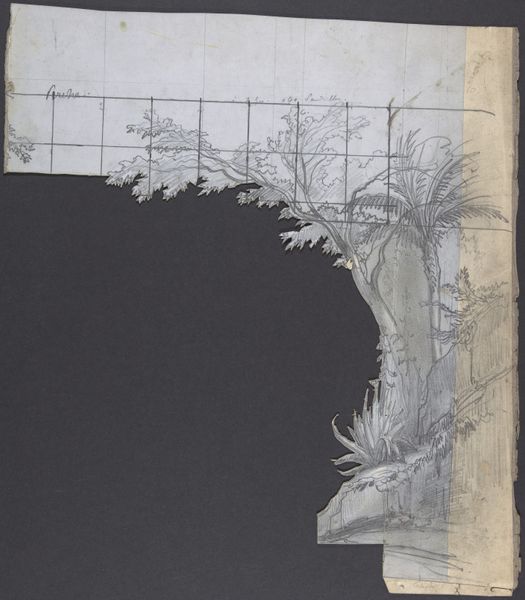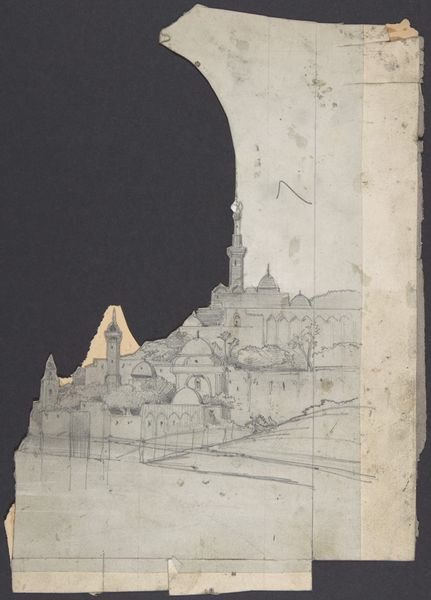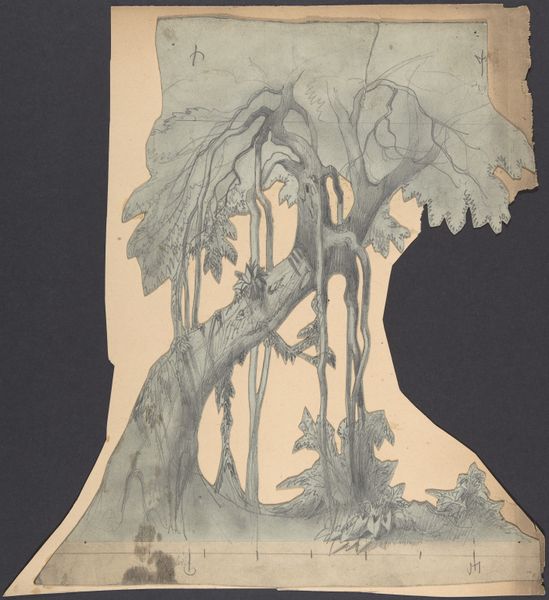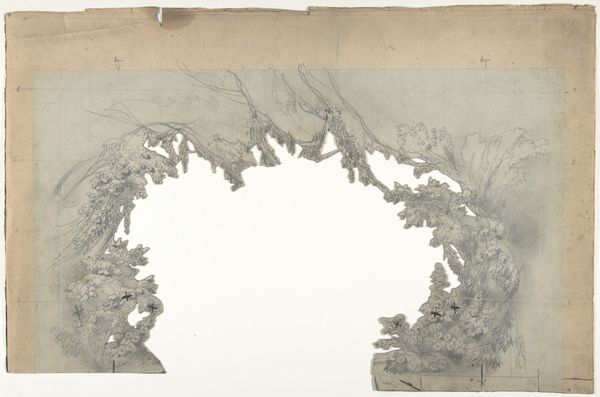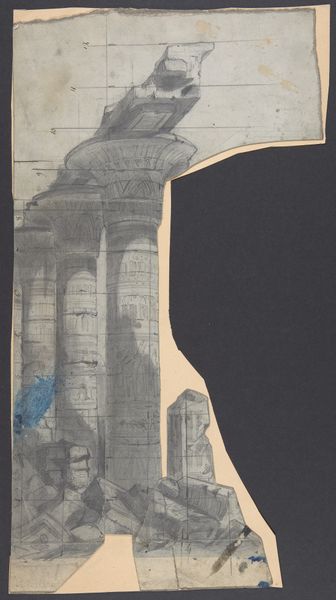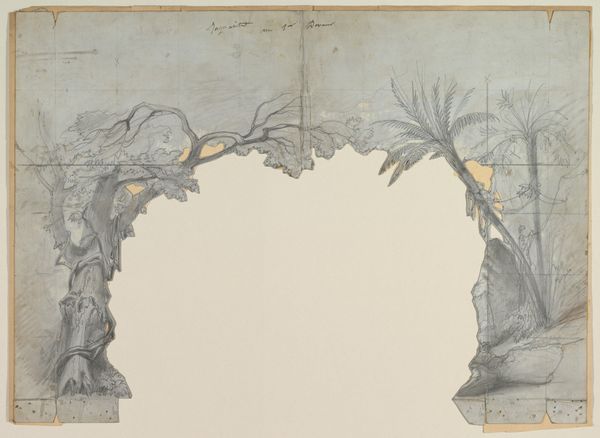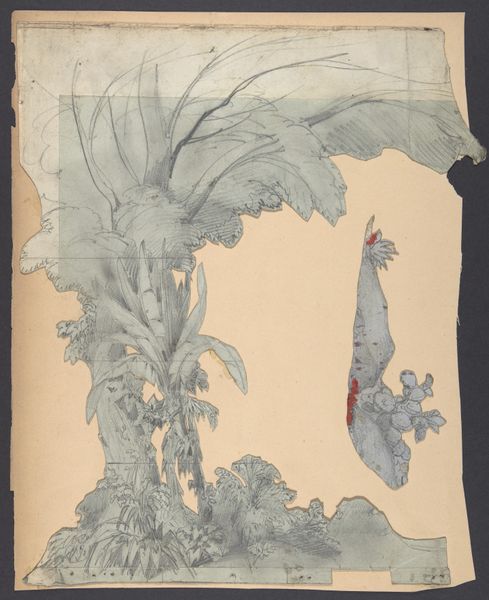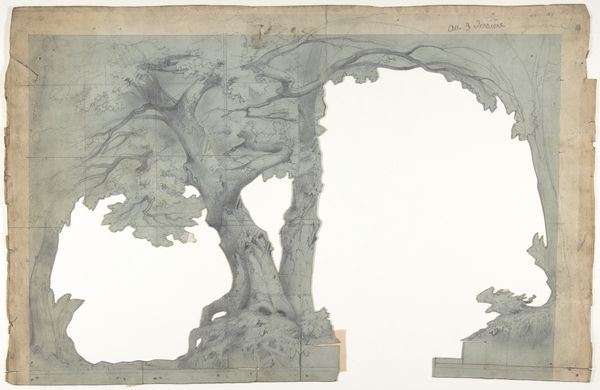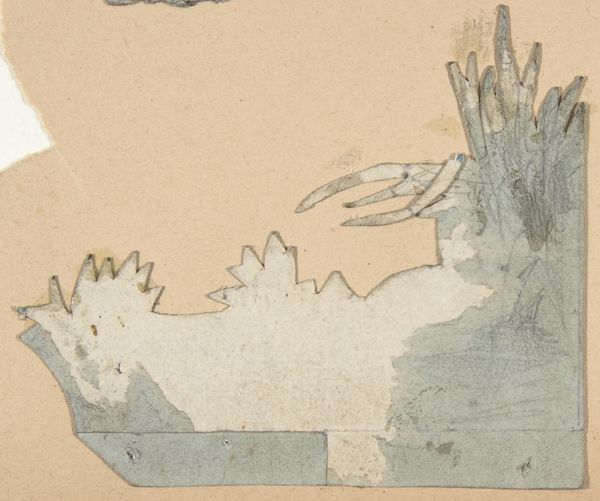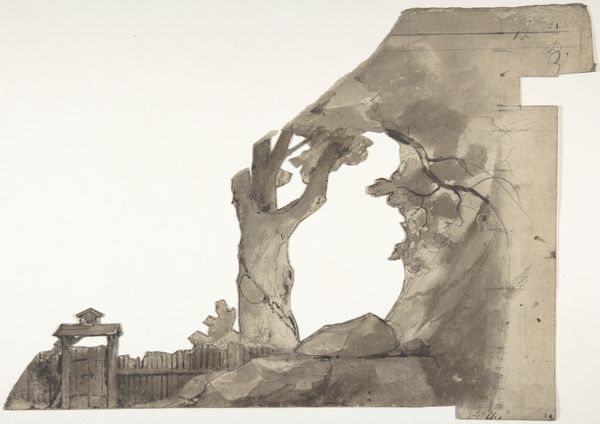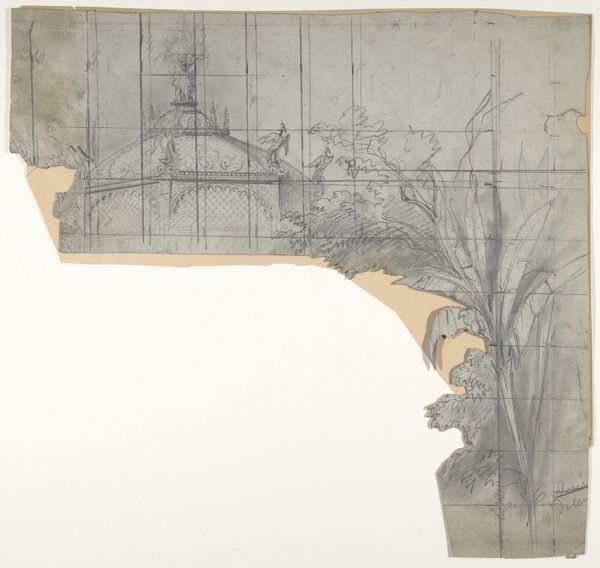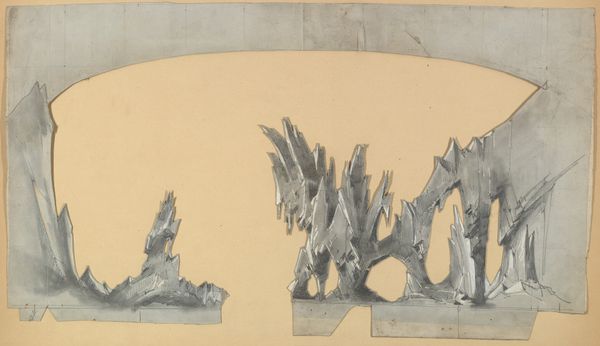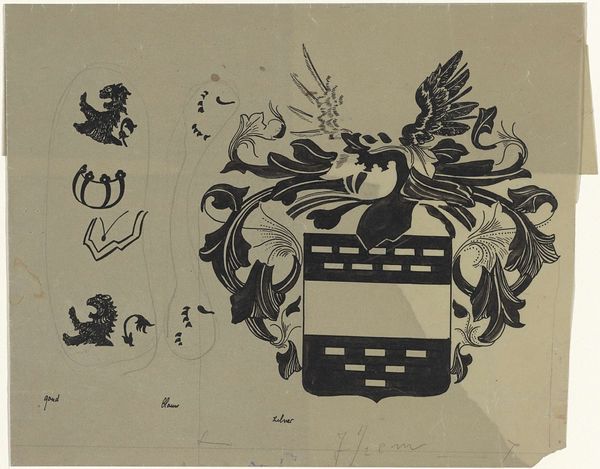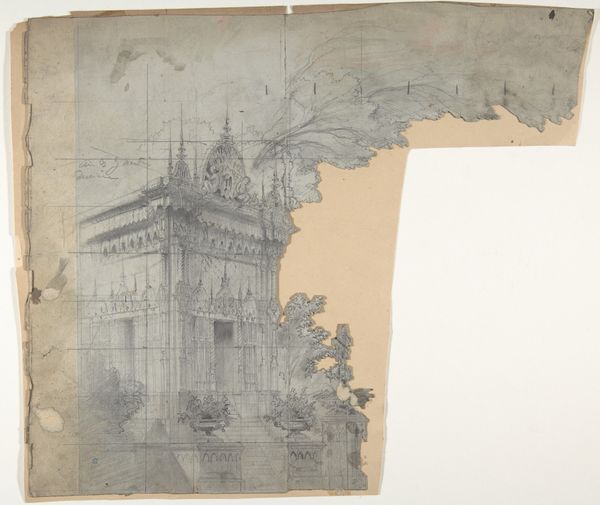
Design for a Stage Set at the Opéra, Paris 1825 - 1890
0:00
0:00
Dimensions: Irregular sheet: 12 1/2 x 16 7/16 in. (31.7 x 41.7 cm)
Copyright: Public Domain
This is Eugène Cicéri's "Design for a Stage Set at the Opéra, Paris," an undated drawing now held at the Metropolitan Museum of Art. Cicéri, born in 1813, lived through a time of immense social upheaval and artistic transformation in France. He witnessed the rise and fall of monarchies and republics, as well as the flourishing of Romanticism and the dawn of Realism. In the 19th century, the Paris Opéra was more than just a theater, it was a symbol of national identity and cultural prestige. As you look at the landscape you can almost hear the music, the drama. But it also reflects a society deeply stratified by class. While the performances were a display of artistry, the opera house itself was a space of social performance, where the elite would gather to see and be seen, reinforcing their status. What stories might unfold within this space? What does it mean to create a space that is both a work of art and a stage for societal rituals?
Comments
No comments
Be the first to comment and join the conversation on the ultimate creative platform.
